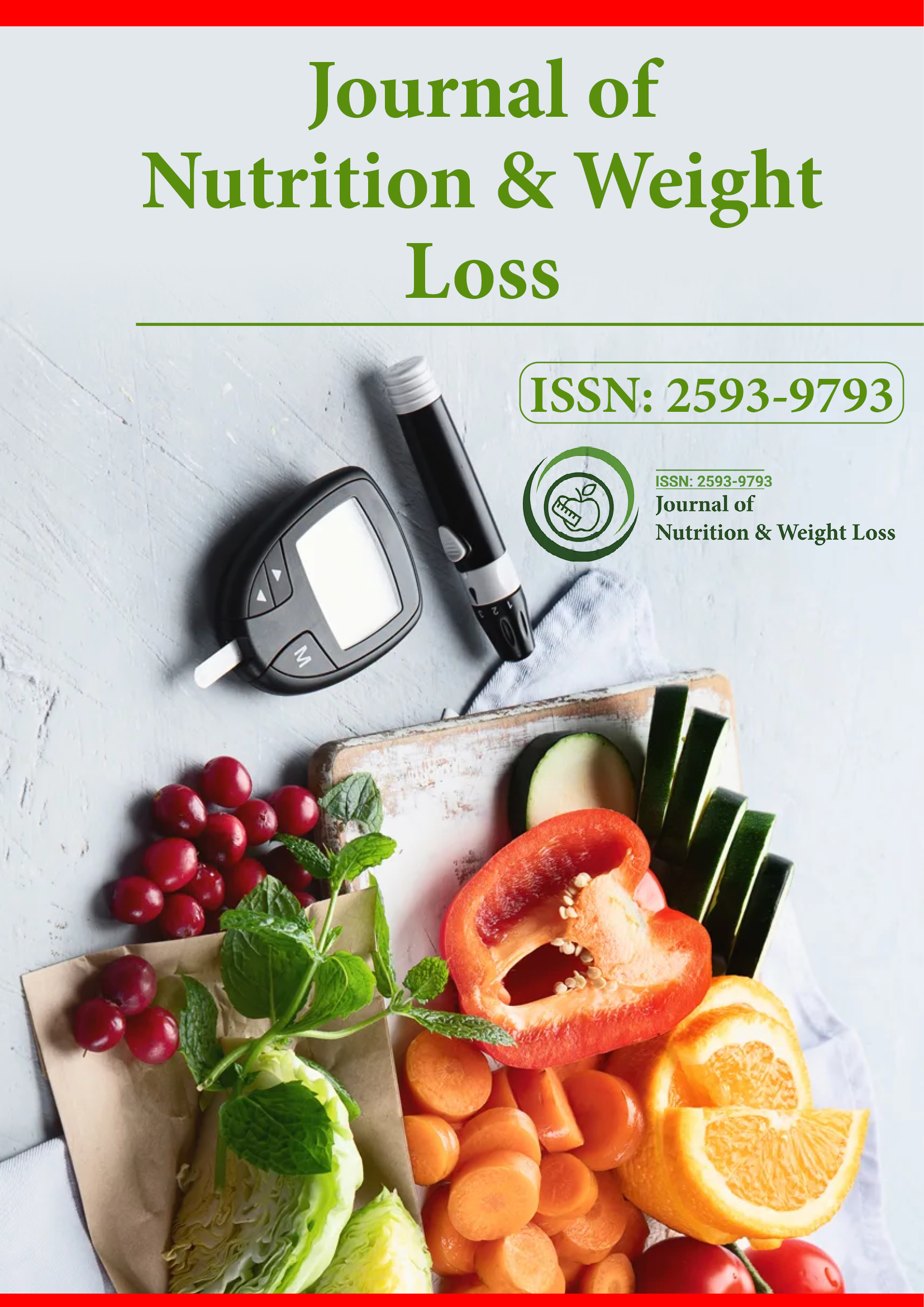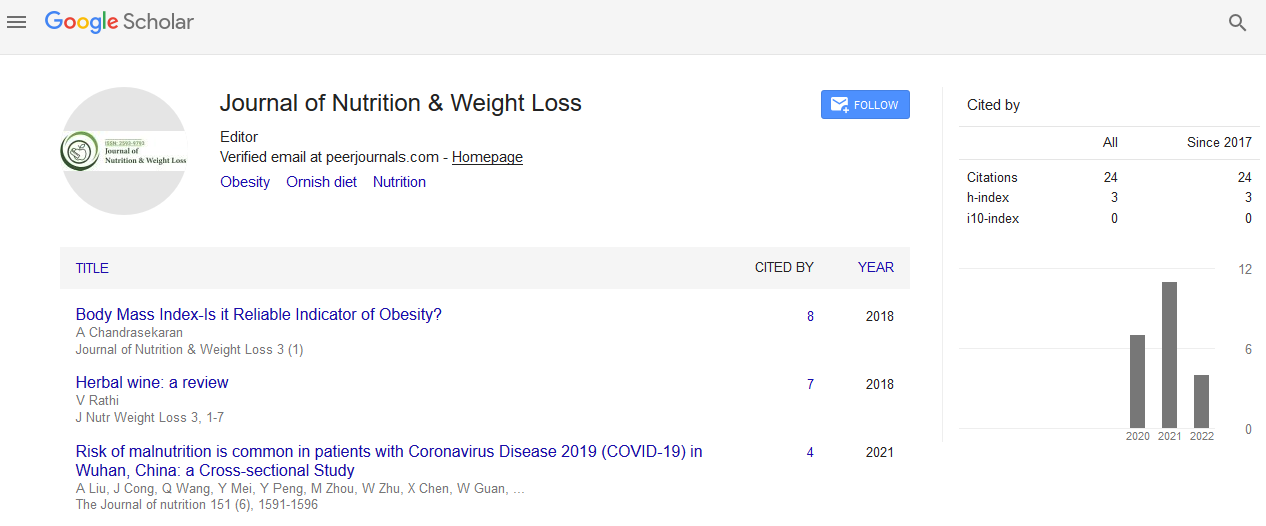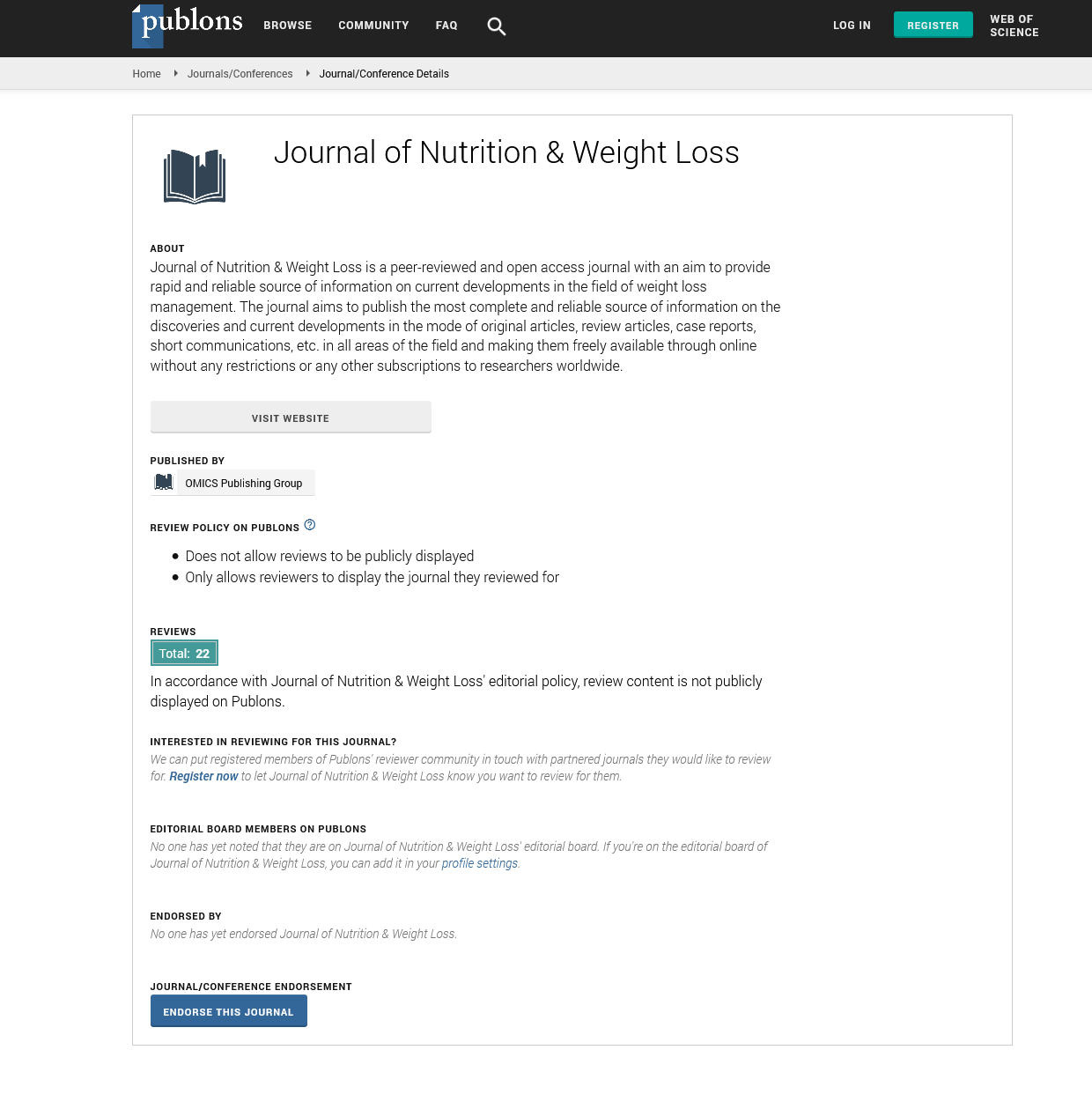Indexed In
- RefSeek
- Hamdard University
- EBSCO A-Z
- Publons
- Euro Pub
- Google Scholar
Useful Links
Share This Page
Journal Flyer

Open Access Journals
- Agri and Aquaculture
- Biochemistry
- Bioinformatics & Systems Biology
- Business & Management
- Chemistry
- Clinical Sciences
- Engineering
- Food & Nutrition
- General Science
- Genetics & Molecular Biology
- Immunology & Microbiology
- Medical Sciences
- Neuroscience & Psychology
- Nursing & Health Care
- Pharmaceutical Sciences
Editorial - (2021) Volume 0, Issue 0
An Editorial Note on Future Diets in India
Sonika Sharma*Received: 15-Nov-2021 Published: 25-Nov-2021, DOI: 10.35248/2593-9793.21.s4.141
Editorial
Against a backdrop of a quickly changing food framework and a developing populace, characterisation of likely future eating regimens in India can assist with illuminating agribusiness and wellbeing strategies. We efficiently looked through six distributed writing data sets and dark writing storehouses up to January 2018 for studies extending the utilization of food varieties in India to time focuses past 2018. The 11 recognized investigations provided details regarding nine food varieties up to 2050: the accessible proof recommends extended expansions in per capita utilization of vegetables, leafy foods items, and minimal extended change in cereal (rice and wheat) and heartbeat utilization. Meat utilization is projected to stay low. Understanding and moderating the effects of extended dietary changes in India is imperative to ensure general wellbeing and the climate.
Eats less carbs in India are changing and in late a long time there has been a decrease in the utilization of certain cereals like millets, while the utilization of salt, oils and creature items have expanded. These dietary changes are probably going to have contributed to a limited extent to an expanded weight of non-transferable infections (NCDs) in India, a pattern seen across some low-and center pay nations as populaces become progressively metropolitan and livelihoods rise. An expected 61% of passings in India were owing to NCDs in 2017, while the pervasiveness of hindering (short tallness for age) among youngsters under 5 years of age remains very high at practically 40% demonstrative of the concurrence of overweight and corpulence with under-nourishment. Also, 66% of the Indian populace are assessed to be micronutrient lacking, with their eating regimens neglecting to give suggested levels of minerals and nutrients, for example, iron and nutrient-A that are regularly found in the Indian eating routine in beats, coarse cereals, and dull green verdant vegetables. Tending to this eating routine related weight of illness in India stays a squeezing need.
Changing dietary examples may likewise affect natural boundaries. The farming area represented 17.6% of India's ozone harming substance (GHG) outflows in 2007 and because of its enormous populace; India is now the fourth biggest producer of GHGs on the planet. The farming area is likewise a significant client of ground and surface water and late changes in dietary examples in India are connected to expanded interest for water system water. This represents an extra issue for natural manageability as water system water for rural use is progressively being drawn from quickly draining groundwater assets. Ebb and flow and future patterns in Indian eating regimens consequently have expected ramifications for wellbeing, GHG discharges, ground and surface water accessibility, and possibly a few other ecological elements.
Projecting future eating regimens can give valuable data to public and global associations engaged with planning and conveying food and farming arrangement. These projections likewise empower specialists and strategy creators to recognize future wellbeing, wholesome and natural effects of projected dietary changes and illuminate conceivable moderation methodologies. The investigation of dietary projections is interdisciplinary and there is as of now no 'best quality level' approach, nor an agreement on revealing guidelines. There needs to-date been no efficient survey of the dietary projections attempted for India. We hence played out a methodical survey of studies that have extended future weight control plans in India; we intended to distinguish patterns in extended future admission of food varieties, with thought of study strategy and revealing quality.
In the first place, per capita oat and heartbeat utilization is projected to remain moderately steady even in long haul projections to 2050 independent of pay development presumptions. Second, per capita utilization of sugar, dairy, meat, vegetables and organic product is projected to increment, with the size of the extended expansion in meat and dairy utilization expected to be straightforwardly identified with pay development. Third, in metropolitan regions, current and future utilization of cereals is lower and organic product is higher than in rustic regions.
Past the advantage of anticipating supply-request holes later on, utilization projections give a way to decide the effects of changing utilization designs on natural results, for example, land and water use, and wellbeing. This will be valuable for policymakers across wellbeing, sustenance, agribusiness and natural areas to react to the changing truth of their nation, subsequently deciding the future strength of their populace.
Citation: Sonika S (2021) An Editorial Note on Future Diets in India. J Nutr Weight Loss. 6:141.
Copyright: © 2021 Sonika S, This is an open-access article distributed under the terms of the Creative Commons Attribution License, which permits unrestricted use, distribution, and reproduction in any medium, provided the original author and source are credited.


